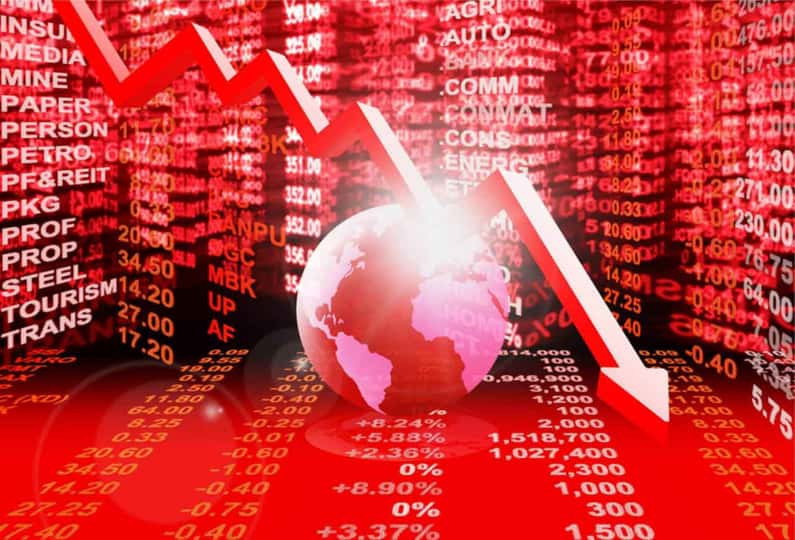The root cause of the bear market is unprecedented.
The speed that it became a bear market is unprecedented.
And thus what happens next is completely unpredictable…but we will try our best to figure it out.
Investors look to history to help make sense of events with the hopes that they follow similar patterns. But as shared above, there are really no easily comparable situations to this one.
Sure there have been health scares in the past. And of course there have been many bear markets. But this is a unique Black Swan event that, combined with 24/7 news and rampant social media, led to the viral spread of fear at record speeds.
Today I want to share 3 possible scenarios of how this plays out along with a corresponding trading plan.
Short Bear (But Don’t Count On It)
Perhaps investors now believe the economic damage will be very temporary. When you combine that with a 27% discount in stock prices with the unattractiveness of all interest bearing investments, you have the makings for a quick recovery.
Yes, this may have started on Friday with a 9.3% rally into the finish line thanks to a well-received press conference from the Trump administration that included a parade of healthcare execs showing a united front to combat the spread of the virus.
This short bear result would best resemble the Crash of 1997 caused by an Asian financial crisis where stocks quickly tumbled in shocking fashion. This was followed by a few quick retests of the low, before a long, sustained move higher.
The big difference from now is that the problem seemed so disconnected from our lives in the US. And we certainly weren’t shutting down all sporting events, concerts, airlines, cruises, schools, places of work etc, etc.
I put pretty low odds on this one because we have not yet seen all the ripple effects that are likely to happen from here (and to be discussed in the next section: Long Bear). But for now, lets’ agree it is possible it could follow this pattern.
If so, there likely will be a retest of recent lows and then investors should buy that dip for the resumption of the bull market. And yes, your best investments will be to buy the most beaten down groups like energy, industrials, airlines, travel/leisure, entertainment, restaurants and anything else that was about people being together in public.
Long Bear…Deep Bear
Let’s appreciate the likely chain reaction of events that takes place from here:
- The virus becomes much more widespread.
- The # of cases rises…and so too does the death total. And the media never stops the drumbeat of fear.
- Headlines of famous people sick or dying. Tom Hanks was just the start. Imagine a nonstop parade of headlines featuring famous, beloved and leading worldwide figures affected. And the negative impact on our psyche and habits and spending.
- More and more and more cancellations of events
- More and more and more work from home.
And then the chain of events devolves into a more traditional recession. Meaning where work at home becomes actual layoffs. And companies start cutting expenses because of worsening ROI on new projects.
Now you have the makings of a more typical recession which takes a while to work its way out of the economic system. That is why the average bear market is 13 months long. But even the short ones are still in the 3-6 month range. And right now we have not even finished month #1.
Aye, but here is the rub. The circumstances behind the recession, true societal upheaval from the virus (aka fear of death), could create a much deeper recession and deeper bear market bottom. So if the average bear produces a 34% decline we could be talking about 40-50%.
In this case it becomes less about the Coronavirus and more about the typical bear market connected to a recession. So we would start paying more attention to the economic data to appreciate any little sign of improvement that could spark the next bull market cycle.
Timing these bottoms is one of the toughest games in town. Instead a dollar cost averaging approach may be best. Like 25% a month over 4 months would get you close enough to the market bottom. And in general the groups that went down the most will bounce the most. Certainly the groups noted in the previous section. But also consider tech, financials and consumer discretionary as part of the mix.
Long Bear…Unsure Bear
This is kind of a melding of the first two ideas. Yes, it lingers around longer because of the economic damage that is likely to unfold. But since investors still see it as a temporary event, then they keep buying up every move lower. And so what you have is an extended trading range below 2715 (bear market territory).
This would be the most annoying outcome because there would be so many false starts and would make you feel like giving up. But it’s completely plausible since there are already so many investors who appreciate the long term attractive buys now displayed before them. But until the full extent of the economic damage is fully understood, it will be hard to get a lasting recovery.
Traders will get chopped up in this environment as they will so often be buying when they should sell and vice versa. This is a better environment for the patient long term investors out there who know that in time they got a great price…just a matter of when it finally heads higher. Warren Buffett is the poster child for this approach.
In this scenario we go for the same industry groups as noted above. We just keep averaging our way in on the dips with conviction that in time we will see ample reward.
In Closing…
Right now I believe the last two scenarios are the most likely. The key to the way it ends up is all about discovering the full extent of the economic damage. And that will take some time.
That is why I am advocating a hedged portfolio for customers blending inverse ETFs and strategically selected stocks. And yes, I continue to advocate that even after Friday’s big bounce.
This hedge should produce profits as the market explores lower, lows. Then I will look for spots to emerge from the hedge by buying more and more undervalued stocks for the eventual return to a bull market.
I know its crazy out there. And I am trying my best to help investors make sense and profit from the situation. The best way for me to do that is give you 30 days access to the Reitmeister Total Return.
This is my newsletter service where I share more frequent commentaries on the market outlook, trading strategy, and yes, a portfolio of hand selected stocks and ETFs to produce profits whether we have a bull…a bear…or anywhere in between.
Just click the link below to see 5 stocks and 4 ETFs in the portfolio now, and all the future trades as we find bottom on this bear and the new bull emerges.
30 Day Trial of Reitmeister Total Return
Wishing you a world of investment success!

Steve Reitmeister
…but everyone calls me Reity (pronounced “Righty”)
CEO, Stock News Network
Editor, Reitmeister Total Return
SPY shares fell $0.59 (-0.22%) in after-hours trading Friday. Year-to-date, SPY has declined -16.32%, versus a -16.32% rise in the benchmark S&P 500 index during the same period.
About the Author: Steve Reitmeister

Steve is better known to the StockNews audience as “Reity”. Not only is he the CEO of the firm, but he also shares his 40 years of investment experience in the Reitmeister Total Return portfolio. Learn more about Reity’s background, along with links to his most recent articles and stock picks. More...
More Resources for the Stocks in this Article
| Ticker | POWR Rating | Industry Rank | Rank in Industry |
| SPY | Get Rating | Get Rating | Get Rating |
| Get Rating | Get Rating | Get Rating | |
| IWM | Get Rating | Get Rating | Get Rating |
| MDY | Get Rating | Get Rating | Get Rating |
| QQQ | Get Rating | Get Rating | Get Rating |






